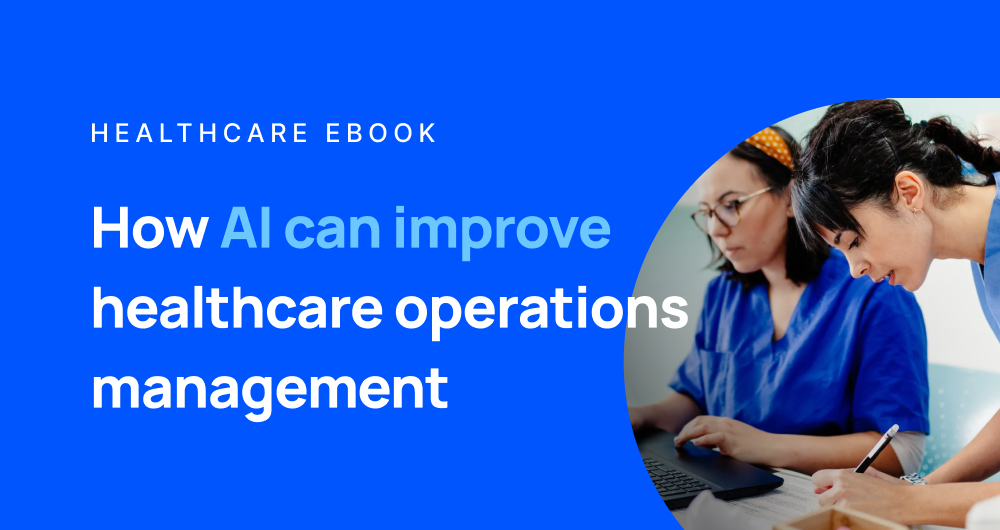The Future of Work and Mobile Workforce: Trend Predictions
When it comes to work and the workplace, there are plenty of dissenting opinions about what the future will look like. Two-thirds of Americans believe robots will perform most of the work currently done by humans in the next 50 years, but some experts say the automation revolution will happen slower than we think.
The effect of automation on the labor market is a huge consideration for the future of work, but it’s not the only one.
- Will we become more flexible and remote in working locations?
- How will work/life balance evolve over time?
- Will office spaces dwindle and home offices thrive?
- What industries are poised for a transformational shift?
- How will these industry changes affect the way their employees work?
So, what trends in the workplace should we expect to see in the coming years? We decided to pose this question to the team at Skedulo, as well as a few of our customers who are setting the pace when it comes to using technology to effectively manage a mobile workforce. Here are several predictions from our very own on the future of mobile workforces:
Drones and Air Freight in the Mobile Workforce
Amazon’s “Prime Air” service made its first autonomous delivery in the U.S. in 2017, and they are investing heavily in their drone services while they wait to see how regulations work out. Walmart has also applied for permission to test drones for home deliveries, and Google is investing heavily in Project Wing, their delivery drone project (which includes an important first step: the software to manage drones from many different manufacturers as they travel in all different directions above us).
“I think drones and air freight will become a handy resource for swift delivery and customer management. Take aged-care workers as an example—perhaps they are on the job throughout the day and they have run short of equipment or perishables. They could request these from the head office and have them immediately dispatched to the appointment they will be at within the expected delivery time frame. I think the challenge of something like this would be government capacity. Technology is always ahead of regulations.”
– Mitchell Usher, Operations Manager, Skedulo
AI, VR, and Wearable Tech in the Future Workforce
The wearable tech market is expected to grow to $34 billion by 2020. Artificial intelligence as a whole is harder to quantify because its effects are felt throughout several different industries, and experts remain split on its economic impact. Estimates range between $644 million and $126 billion by 2025—but everyone agrees it will shake up how we work along the way.
“I think Artificial Intelligence (AI) and possibly Virtual Reality (VR) will be used to deliver to customers. People can use mobile instruments that communicate with electric cars with built-in dash panels. Mobile workforces require the ability to use a mobile workforce solution with ease, perhaps synced to wearable devices like watches and bracelets. This would also include an element of voice control through keyword dissection, so the mobile worker could mutter “Where’s my next job?” and have coordinates and details automatically assigned to them and their devices.”
– Alec Heath, Technical Writer, Skedulo
Self-Driving Vehicles and the future of Work
There’s plenty of work to do to convince a skeptical general public that this new technology is safe—but then again, most major innovations come with healthy skepticism. Auto manufacturers and tech companies are working on refining self-driving cars for public use, and regulations are working on how to catch up.
“Autonomous cars will shorten distances. Travel will be effortless and travel time will become efficient time where the worker can complete admin tasks, professional development etc. Both customers and service providers will agree to travel long distances (compared to today) to get the RIGHT service.”
– Sharon Cohen-Ofir, IT Manager, Montrose Therapy & Respite Services
‘Smarter’ Machines for Work
There are plenty of great examples of smarter machines benefiting humans, and it seems like new ones crop up every day. As these devices become fully incorporated into the workplace, deep learning capabilities will open up even more opportunities for robot-human collaboration.
“Right now the big conversation is around how technology and machines will replace humans. This will have an opposite impact. As we move into the next 10-15 years, machines and technology will become a bigger part of how people complete their work. Machines are already here today in the form of computers and smart devices, we’ll see the rise of “smarter” machines, powered by AI, that will allow people to make smarter decisions as it relates to their work, allowing them to be as efficient and successful as possible in the process.”
– Daniel Frohnen, VP of Marketing, Skedulo
Skill Development and Relationship Focus
Although AI will undoubtedly become an essential part of the workforce—potentially doubling annual economic growth rates in 2035—there are some areas where humans simply cannot be replaced. As AI enters the workforce, humans will shift into higher-order jobs that require advanced cognition, such as not taking food orders but managing the robots that do. Furthermore, there are professions that require emotional intelligence and empathy that AI cannot provide, including nursing or mental health services.
“The nature of services we provide will be far less focused on practical supports like assistance with daily living tasks and more focused on assisting people to develop skills and relationships to meet their own needs using technology. Transport will be achievable with automated vehicles, assistance with meals will be provided by the drone delivery and domestic tasks completed by robot. All these technologies already exist now – but they will be common place. The current workforce will still be engaged, but as teachers and enablers. They will need to be experts on how to identify the right tools to meet customers unique needs –and how we help them achieve or maintain independence!”
– John Rowland, Director of Projects and Business Performance, OAK Tasmania
The Rise of Remote Work
Remote work seems to be the new wave of work in the future. In fact, a recent survey of business leaders at the Global Leadership Summit in London found that “34% said more than half their company’s full-time workforce would be working remotely by 2020”. The push for more flexibility is correlated to productivity and outcome-based working. According to the State of Work Productivity Report, “65% of full-time employees think a remote work schedule would increase productivity.” This is backed up by more than two-thirds of managers reporting an increase in overall productivity from their remote employees.
“I am expecting, and hoping for, growth in Outcomes Based Working across workplaces. Outcomes Based Working allows employees to focus on results, working collaboratively with other employees to achieve the best outcomes for your customers and ultimately your business. This allows for flexibility in the workplace – people are free to find the best way to achieve an outcome, regardless of time clocked in “at the desk”. Clock watching would become a thing of the past; if someone can achieve their best work from 6am – 3pm, then it’s much better value for the salary costs to have them working those hours rather than paying them for an unproductive 3pm-5pm slump.”
– Emily Hay, Technical Project Manager, Skedulo
The Future Is Already Here
The SoLoMo “trend” is not a passing fad—it’s a whole way of reaching people. People are seamlessly connected to each other and to the rest of the world, and we carry nearly infinite sources of information in our pocket. As more and more companies embrace SoLoMo and smart machines, companies can make customer experiences more individualized and situational.
“I think the future of work is already here, it just happened so fast that we missed how revolutionary it was. We have offloaded much of our memories and processing to these magical devices we carry around in our pockets. We’re never lost anymore, always connected to each other, infinitely smarter than we’ve ever been individually. In short, we’ve become cyborgs and we were too busy to notice. The social, local, mobile (SoLoMo) movement of prior years was connective tissue enabling us to think bigger and handle higher order tasks. Mobile workforces in 2018 will be looking to take on these higher order tasks: moving from scheduling one-off jobs to optimizing large scale projects, enhancing the superpowers of their people in the field with more timely information and analysis of work in progress, and tying communication to context to unlock the power of the team.”
– Drew Dillon, Chief Product Officer, Skedulo
The Future of Managing Work In the Field
Experts at Forrester agree that field service will be the face of your company. There will be a continued focus on using field service technologies outside of traditional industries. These technologies will increasingly leverage analytics to manage scheduling and dispatching, taking into account skills, tasks, work orders, assets, time sheets, and service policies.” While these industries grow, the workforce itself will be changing as well. Analyst firm Gartner predicts that by 2020, more than 40% of field service work will be performed by technicians who are not employees of the organization that owns the customer relationship.
“The bottom line is the workforce is changing, and so are customer expectations. In order to meet and exceed customer expectations, you have to understand the state of customer service in general. Amazon, Postmates, Lyft, or the next industry mover make it easy for customers to access their service and consistently deliver on the promises they’ve made. That has changed expectations across the board. Additionally, we can’t forget that by 2020, there will be 105 million mobile workers in the U.S., representing nearly 75% of the U.S. workforce. It has completely changed the dynamics of mobile workforce management, and the tools needed to get the job done. It’s now about connecting the journey across the customer, back office / scheduler, and mobile worker.”
– Matt Fairhurst, Co-Founder / CEO, Skedulo
What Do You See in the Future Workforce?
What do you think? Let us know your thoughts on the future of mobile workforces in the comments below. Meanwhile, check out The Rise of Field Service (FSM) to see why mobile-first solutions are here to stay.


